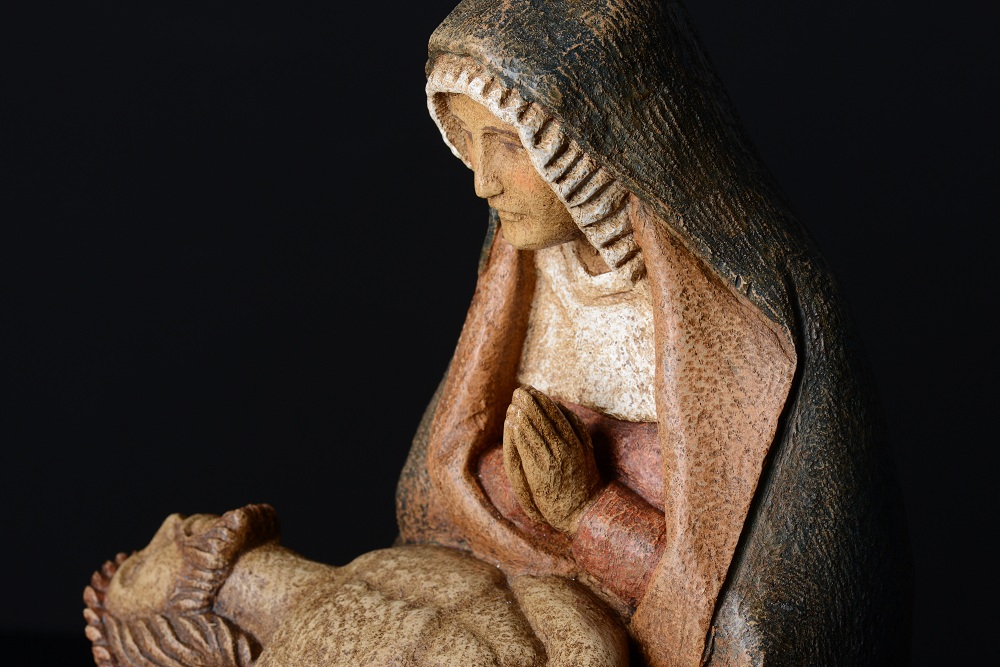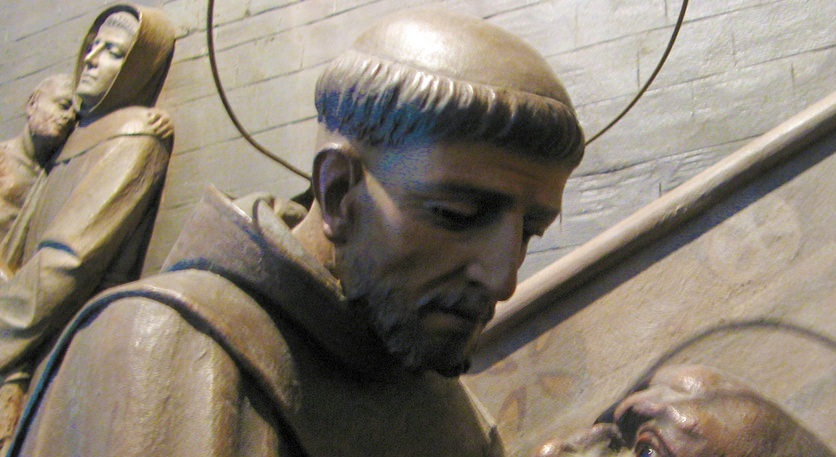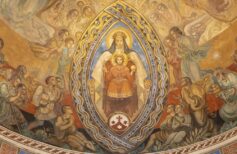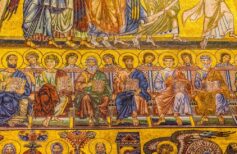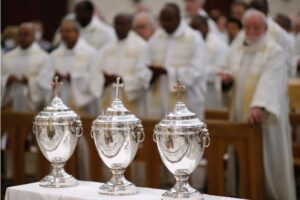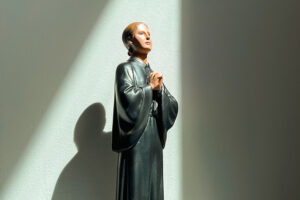Blessed saints are key figures in the history of the Catholic Church. Even today, men and women are deemed worthy of being canonized. Here are the modern saints proclaimed by Pope Francis.
Contents [hide]
Canonization is a practice that the Catholic Church has carried out since its inception, shared with Eastern-rite Churches and the Orthodox Church. Anglicans do not practice it, and Protestants, who do not recognize the veneration of saints, reject it altogether. But what does it involve? It is the official proclamation of a man or woman’s sainthood, recognizing not only their status as blessed, meaning they hold a special place in Heaven, but also promoting their veneration among the faithful. The process to achieve this involves a particular procedure that can take many years. The first documented canonization dates back to 993 AD, when Pope John XV proclaimed St. Ulrich, Bishop of Augsburg, a saint. Since then, thousands of men and women have been canonized—1,726 saints since 1588 alone. Compiling an exact census of all saints and blessed is challenging, considering the martyrs and those whose veneration was abolished and later restored over the centuries. Some Popes proclaimed dozens, others none, and the canonization process has evolved and transformed over the centuries, leading to the one we know today.

Holy Martyrs: sacrificing one’s life in the name of God
The Holy Martyrs are men and women, often very young, who sacrificed their lives for the love of God…
But what does it take to be proclaimed a modern saint? First and foremost, it is still the Pope who ultimately decides who is to be proclaimed a saint. The entire procedure passes through various phases, under the strict supervision of the Congregation for the Causes of Saints, the Church body responsible for beatification processes.
Let’s take a look at the contemporary saints—those canonized from 2019 to today.
Canonizations by Pope Francis
Compared to many of his predecessors, Pope Francis has celebrated an impressive number of canonizations, canonizing 909 saints from 2013 to 2022. Seven were recognized through equipollent canonization.
Let’s pause briefly on the difference between equipollent canonization and beatification and formal canonizations.
In general, equipollent refers to cases where beatification and canonization are granted by papal decree, legitimizing and recognizing a long-established, spontaneous cult without the need for further specific investigations or attesting to the presence of one or more miracles. Equipollent canonization and beatification, therefore, concern the “ancient blessed,” who already have a well-established and longstanding veneration. Equipollent beatification occurs when the Holy See officially and solemnly recognizes the cult and sanctity of the blessed, perhaps after proving their martyrdom, and formally declares them saints.
Equipollent canonization, on the other hand, involves the recognition of three criteria:
- Antiquity of the cult;
- Constant and widespread testimony to signs of faith, virtues, or evidence of martyrdom;
- Uninterrupted reputation for miracles attributed to their intercession.
Formal beatifications and canonizations, in contrast, require a lengthy and regular canonization process, involving the recognition of a miracle (for beatification) and a second miracle (for canonization).

Let’s review the canonizations proclaimed by Pope Francis in the last four years, noting that in previous years, the Pope also promoted many notable canonizations, including that of John Paul II, beatified in 2011 by his successor Pope Benedict XVI and proclaimed a saint by Pope Francis in 2014.
Saints Canonized in 2019
Among the canonizations proclaimed by Pope Francis in 2019 in Rome’s St. Peter’s Square during the solemn canonization Mass on 13 October are:
- Cardinal John Henry Newman (1801-1890), an Anglican who converted to Catholicism and founded the Oratory of St. Philip Neri in Birmingham. The cause for the beatification and canonization of Blessed John Henry Newman began in 1958 under the old norms of the Codex Iuris Canonici. After the initial process confirmed his fame of sanctity and miracles, the apostolic process was conducted from 1984 to 1986 to demonstrate his specific virtues. In 2010, Pope Benedict XVI beatified the Venerable Newman on 19 September 2010. Pope Francis later authorized the Congregation for the Causes of Saints to promulgate the decree *super miraculo*, recognizing the miraculous healing of a mother in Chicago in 2013, who invoked the Cardinal when she was at risk of dying from a severe abdominal hemorrhage, which stopped instantly.
- Mother Giuseppina Vannini (1859-1911), founder of the Congregation of the Daughters of St. Camillus, dedicated to assisting the sick. She was recognized as Blessed by John Paul II in 1992, with the recognition of a miracle in Buenos Aires, Argentina, in 1958.
- Mariam Thresia Chiramel Mankidyan (1876-1926), a religious sister devoted to charity who followed Christ’s footsteps among the poorest and most marginalized, founding the Congregation of the Holy Family in Thrissur. She was proclaimed a saint through the *Decreto super Miraculo* for the recognition of miraculous healings attributed to her.
- Dulce Lopes Pontes (1914-1992), a professed nun of the Congregation of the Missionary Sisters of the Immaculate Conception of the Mother of God.
- Marguerite Bays (1815-1879), a virgin and laywoman of the Secular Franciscan Order, who worked as a seamstress while dedicating herself to helping others without ever neglecting prayer.
Through equipollent canonization, St. Bartholomew Fernandes of the Martyrs (1514-1590), Archbishop of Braga, a man of great integrity who devoted himself with love and charity to his flock and left behind many valuable writings, was declared a saint.
Blessed Canonized in 2020
There were no canonizations in 2020, but there were some beatifications of men and women destined to become new saints and blessed. Among them, we remember the young Carlo Acutis, the “blessed of the digital age,” who died at just 15 from leukemia. He was a layperson deeply devoted to the Virgin Mary and the Eucharist. He is credited with creating websites and projects on faith while volunteering with the homeless and at soup kitchens.

Carlo Acutis: The Blessed of the Digital Age
Carlo Acutis, the millennial saint who dedicated his short life to Jesus and helping the poor and needy, reminds us how much we need saints…
Other notable figures include:
- Blessed Giovanni Tavelli da Tossignano (1386-1446), from the Order of Jesuates and Bishop of Ferrara;
- Maria Luigia of the Most Blessed Sacrament (1826-1886), founder of the Franciscan Sisters Adorers of the Holy Cross, dedicated to educating youth, assisting the sick, elderly, and disabled;
- Olinto Marella (1882-1969), a diocesan priest and founder of the “Little Workers” dedicated to after-school care and vocational training. Known as “Father Marella,” he had a deep faith and insight into the rapid changes of modernity;
- Michael McGivney (1852-1890), diocesan priest and founder of the Knights of Columbus, a global organization with over 1.5 million members committed to evangelization, charity, racial integration, and religious freedom;
- Giovanni Roig y Diggle (1917-1936), layperson and martyr, killed in odium fidei at the age of 19 during the Spanish Civil War.
Saints Canonized in 2021
In 2021, Pope Francis proclaimed Saint Margaret of Città di Castello (1287-1320), a medieval mystic dedicated to prayer and severe penance, through equipollent canonization.
Saints Canonized in 2022
On May 15, 2022, in St. Peter’s Square, Pope Francis canonized the following:
- Lazarus Devasahayam Pillai (1712-1752), an Indian layman, father, and martyr, beatified by Pope Benedict XVI. Killed during the Christian persecution in the Kingdom of Travancore for renouncing Hinduism, he became the first Indian layman to become a saint;
- César de Bus (1544-1607), a priest who, after converting from a worldly life, dedicated himself to preaching and catechesis, founding the Congregation of the Fathers of Christian Doctrine;
- Luigi Maria Palazzolo (1827-1886), a priest from Bergamo who founded the Sisters of the Poor and the Brothers of the Holy Family;
- Giustino Maria Russolillo (1891-1955), an Italian priest who founded the Society of Divine Vocations for the promotion of priestly and consecrated life vocations;
- Maria Francesca di Gesù (Anna Maria Rubatto) (1844-1904), founder of the Capuchin Sisters of Loano, who worked as a missionary among the indigenous people of Latin America and was the first saint of Uruguay;
- Maria Domenica Mantovani (1862-1934), founder of the Institute of the Little Sisters of the Holy Family, dedicated to the care of the poor, orphans, and the sick;
- Titus Brandsma (1881-1942), a Dutch priest of the Order of Carmelites, who was martyred at Dachau concentration camp after defending the Church and humanity against Nazi atrocities;
- Marie Rivier (1768-1838), a religious woman who lived during the French Revolution and founded the Sisters of the Presentation of Mary;
- Maria di Gesù Santocanale (1852-1923), founder of the Capuchin Sisters of the Immaculate Conception of Lourdes, She gave up wealth and comfort to dedicate her life to the poor and the vulnerable.
On 9 October 2022, Pope Francis presided over the Eucharistic celebration and the canonisation of Blessed Artemide Zatti and Giovanni Battista Scalabrini in St Peter’s Square. The first, Artemide Zatti (1880-1951), belonged to the Society of St Francis de Sales and devoted his life to the poor. He lived in Patagonia, where he sacrificed himself for the care of the needy in Viedma Hospital.

Saint Peter in the Vatican: Church symbol of the whole Christian world
Saint Peter in the Vatican is a basilica full of meanings, mysteries and…
Giovanni Battista Scalabrini (1839-1905) was the Bishop of Piacenza and the founder of the Congregation of the Missionaries of St Charles and the Congregation of the Missionary Sisters of St Charles Borromeo. He made significant contributions in assisting farmers, workers, and migrants in America.




